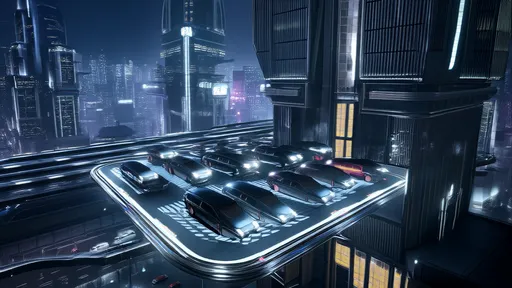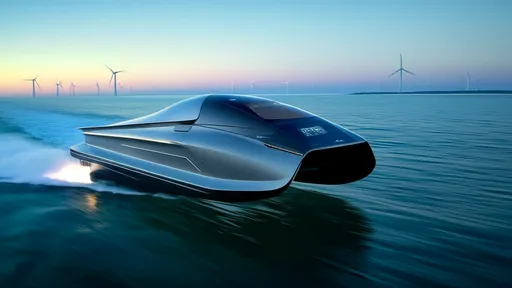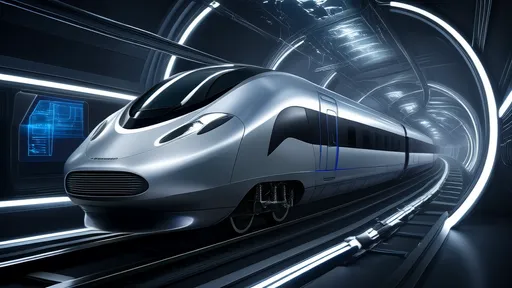The concept of urban air mobility is no longer confined to the realm of science fiction. As cities grow denser and ground transportation becomes increasingly congested, the idea of taking to the skies for daily commutes is gaining traction. At the heart of this revolution are vertiports—specialized hubs designed for the vertical takeoff and landing (VTOL) of electric air taxis. These futuristic transit nodes, often perched atop skyscrapers or integrated into existing infrastructure, promise to redefine how we navigate metropolitan landscapes.
Unlike traditional airports, vertiports prioritize compact efficiency. Their modular designs accommodate multiple aircraft simultaneously while minimizing spatial footprint—a critical advantage in space-starved urban cores. The most advanced prototypes feature automated charging stations, weather-resistant landing pads, and seamless passenger transfer zones connecting to elevators or skybridges. This isn't just about adding another layer to transportation networks; it's about creating three-dimensional mobility ecosystems.
The engineering challenges are as towering as the structures themselves. Architects must account for wind shear patterns unique to high-altitude urban environments, while ensuring structural reinforcements can handle the dynamic loads of frequent VTOL operations. Noise mitigation poses another hurdle—developers are experimenting with sound-dampening materials and strategic pad placements to minimize disruption to surrounding offices or residences. Early adopters like Singapore and Dubai have shown these obstacles aren't insurmountable, with trial vertiports already handling demonstration flights.
Passenger experience distinguishes urban vertiports from conventional aviation facilities. Gone are the lengthy security lines and boarding processes; instead, travelers might check in via facial recognition while their air taxi undergoes a 90-second battery swap. Lounge areas resemble chic co-working spaces more than sterile waiting rooms, complete with augmented reality flight trackers. The goal is to make airborne commutes as routine as hailing a rideshare—just with better views.
Regulatory frameworks are struggling to keep pace with the technology. Aviation authorities worldwide are drafting new classifications for VTOL aircraft and the infrastructure supporting them. Questions about air traffic control for low-altitude corridors, right-of-way protocols, and emergency landing procedures remain unresolved. The coming decade will witness a complex dance between innovators pushing boundaries and regulators ensuring safety doesn't get left on the ground.
Real estate dynamics add another layer of intrigue. Rooftop vertiports could transform underutilized building tops into premium transit-oriented developments. Forward-thinking property owners are already retrofitting structures with reinforced landing zones, anticipating demand from corporate tenants seeking rapid connectivity. Some urban planners envision vertiport-equipped towers becoming the new transit hubs, their value inflated by proximity to aerial mobility networks much like subway-adjacent buildings command price premiums today.
Skeptics highlight valid concerns. The energy demands of widespread air taxi operations could strain urban power grids, despite electric aircraft being cleaner than fossil-fuel alternatives. Equity issues loom large—without careful planning, aerial mobility risks becoming yet another privilege for economic elites. And the psychological barrier of trusting autonomous flying vehicles may prove tougher to overcome than any technical challenge.
Yet the momentum is undeniable. Major aerospace firms have joined startups in the vertiport gold rush, with prototypes ranging from minimalist landing pads to multi-level aerial transit centers featuring retail and dining. As battery densities improve and noise levels drop, resistance from communities may soften. The first commercial vertiports could begin operations before 2030 in progressive cities, initially serving niche routes like airport transfers or hospital connections.
This infrastructure revolution won't happen uniformly. Cities with favorable regulations, high congestion, and corporate backing will lead the charge. Others may watch and wait, learning from pioneers' missteps. But the underlying premise is sound: when ground space runs out, the only way is up. Vertiports represent more than transportation hubs—they're the launchpads for reimagining what cities can become when we truly build upward.

By /Jul 18, 2025

By /Jul 18, 2025

By /Jul 18, 2025

By /Jul 18, 2025

By /Jul 18, 2025

By /Jul 18, 2025

By /Jul 18, 2025

By /Jul 18, 2025

By /Jul 18, 2025

By /Jul 18, 2025

By /Jul 18, 2025

By /Jul 18, 2025

By /Jul 18, 2025

By /Jul 18, 2025

By /Jul 18, 2025

By /Jul 18, 2025

By /Jul 18, 2025

By /Jul 18, 2025